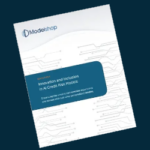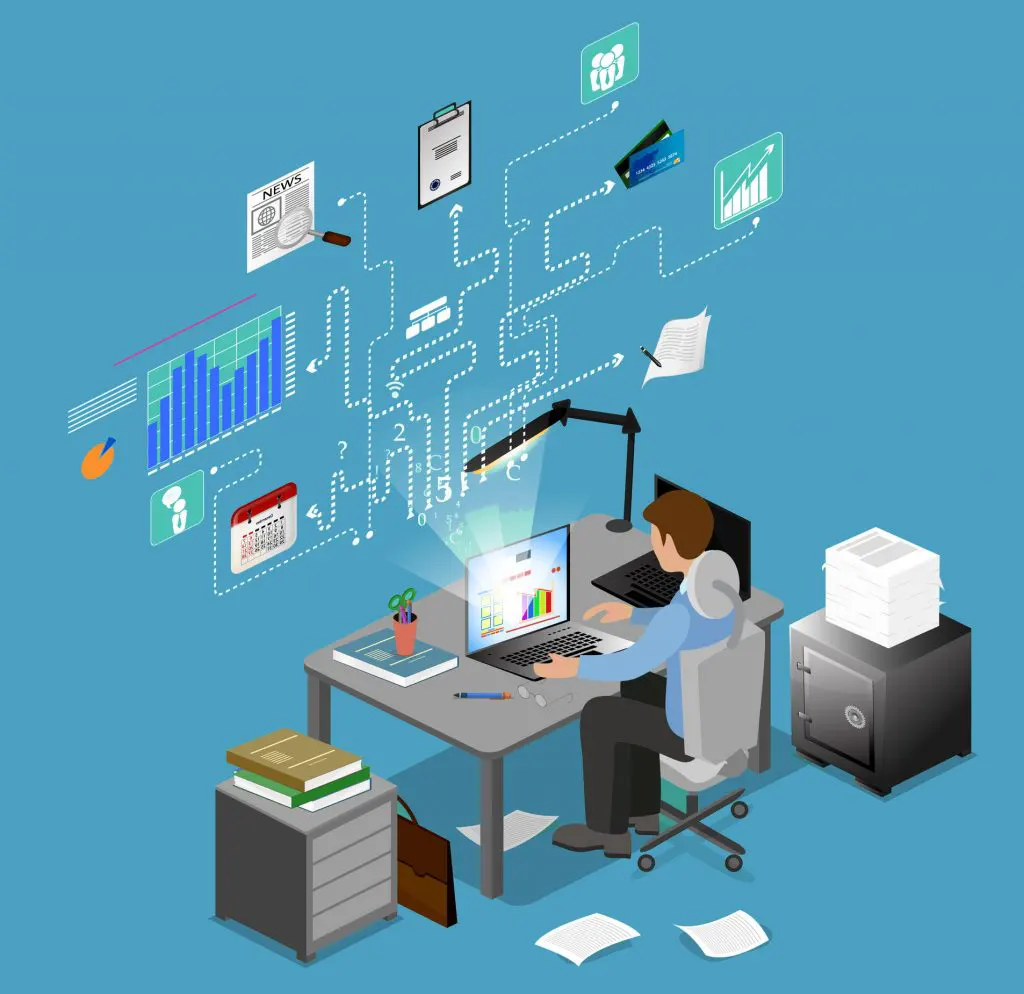(Part II)
There is a common perception that machine learning is the only technology behind AI. As described in Part I of this blog, this view misses critical capabilities that teams creating intelligent software must master. These include dimensional data modeling, business rules, projections and the ability to transform projections into optimal decisions in real-time.
Established AI innovators like Google and Amazon have developed proprietary frameworks that assemble these capabilities to rapidly deliver intelligent solutions. Only small parts of these frameworks have been shared as open source tools. Similarly, innovative AI startup companies have created their own custom software, typically focused on very specific use-cases such as lending or marketing automation.
We are rapidly approaching a future where every business will need to incorporate AI into their products in order to compete. Fortunately, there are emerging trends in no-code modeling platforms that will make it easier for businesses to do just that.
AI powered products: now required
If you aren’t convinced that AI is soon to become a required feature of every product you are not alone. Artificial Intelligence is an overly vague term that has been the subject of substantial hype, leading to confusion and skepticism. In some ways, it reminds me of the hype around the internet in the late 90’s. I have a clear memory of using early tools like MapQuest and bulletin boards thinking that the pundits are over-selling the potential impact, even though I worked in the software industry. It turned out that I was wrong.
Like the internet, AI will lead to a profound disruption of not only business, but of everyday life. The reason isn’t that AI delivers smarter answers, it’s that AI delivers instant answers. Your next generation of customers will have grown up getting instant answers for everything: entertainment, shopping, banking. AI is less about having the absolutely smartest answer and more about removing humans from every process or decision standing between your customer and an instant answer to their current needs. Most businesses that can’t complete transactions without human intervention will become obsolete in less than 5 years.
Why is AI so hard?
AI is hard because all of the technology needed to automate intelligence live in different tools today. Databases and ETL for data modeling, spreadsheets or BI for analysis, data science platforms such as Python for machine learning, and technologies that automate decisions that are most likely in custom code. Moving data between these tools is hard enough, but transferring intelligence between them currently requires manual re-writes of the variables, logic and calculations across multiple systems.
This constant transformation between siloed teams and tools is expensive and time consuming. A common estimate is that 70% of the time involved in building AI solutions is spent extracting and cleaning the data so it can be used by tools across the development process. Not only does this slow down a team’s ability to build AI solutions, it dramatically decreases agility when reacting to new opportunities. If halfway through a project an analyst realizes they need more data or that they made an incorrect assumption, they often have to go back through an expensive process of re-requesting data extracts, which can delay progress by days or weeks.
The end result is that despite tremendous investment, many existing businesses have made limited progress towards AI enabled solutions. In traditional organizations, data scientists, developers and business experts continue to work in silos, continue to use their own tools, and are slow to innovate. By comparison, emerging digital first competitors have integrated these teams with end-to-end proprietary AI frameworks. These teams are now all working on the same modeling tools with the same data structures and a common view of how they apply intelligence to deliver solutions.
No-code to the rescue?
A promising solution to these challenges are no-code platforms that integrate and automate much of the tedious work around creating AI solutions. By leveraging an automated platform that automates data management, machine learning and solution deployment, subject matter experts without coding experience can build complete AI solutions.
Most technologists are skeptics of no-code tools for valid reasons. Early attempts at no-code were not successful because they didn’t have the flexibility needed to handle the nuances of building a true custom software solution. Pointing and clicking together a business application was too tedious and too restrictive compared to more robust software languages with a full range of logic expressions.
There is one well-known exception, the spreadsheet. A spreadsheet is one of the earliest and most successful no-code solutions, and since its invention in the late 70’s the spreadsheet has arguably been the most successful business tool ever. Unlike coding, the spreadsheet allows business experts to work with multiple data sources, create data relationships, build calculations, project future outcomes and make decisions – all without a formal coding language.
One feature of Excel that has contributed to its success is its use of a declarative expression syntax. Excel users have the full power of an expression language without having to worry about the more tedious aspects of coding such as data management, storage, messaging or execution flow. A declarative calculation engine can calculate very complex systems based simply on the business logic created in each cell. If you’ve ever had to re-implement a complex spreadsheet as a software application, it would become clear that a model built in a spreadsheet in a couple of days could take months to re-create in a programming language.
The future of No-code AI
There is a new breed of no-code solutions on the market that are much more capable than prior technologies. These tools promise to deliver a x10 acceleration developing solutions compared to traditional coding. These technologies have primarily focused on less complicated applications such as websites, UI forms and workflow automation, but early no-code AI platforms like Modelshop are maturing rapidly.
Using Excel’s success as a no-code solution informs our path forward to the next generation of no-code AI modeling tools. No-code modeling platforms that do not require the user to worry about data marshaling, storage or execution paths but provide the full power of a declarative syntax will evolve as the successors to Excel and will become the primary tool for subject matter experts to create AI solutions. Unlike Excel, these next-generation no-code modeling tools will be shareable online, able to handle high-dimension data and large datasets, include embedded machine learning and they will be able to process real-time transactions.
No-code AI tools will deliver everything needed to build intelligent applications in one integrated platform:
Online, multi-user environment
Multi-dimensional data modeling
Plug-and-play data connectors
Declarative variables and business rules
Automated machine learning
One-click deployment as real-time APIs
Towards Citizen AI
In five years, the entire software industry will look very different than it does today thanks to an emerging new breed of no-code AI tools. Platform vendors will develop a common way to exchange not only data, but business logic and analytics between systems without requiring code. Intelligent solutions, armed with the ability to make decisions automatically, will begin to transact with each other and commerce between organizations will simultaneously accelerate and become more efficient.
Most importantly, subject matter experts, whether risk analysts, financial analysts or healthcare workers, will be able to create custom AI solutions with no software development or data science background. This era of ‘citizen AI’ development will become a tremendous accelerator of innovation. When experts have an idea and they are able to turn it into an intelligent and automated service in hours instead of months or years, creativity will explode and we will see entirely new social and business ecosystems evolve in ways we can’t currently imagine.







